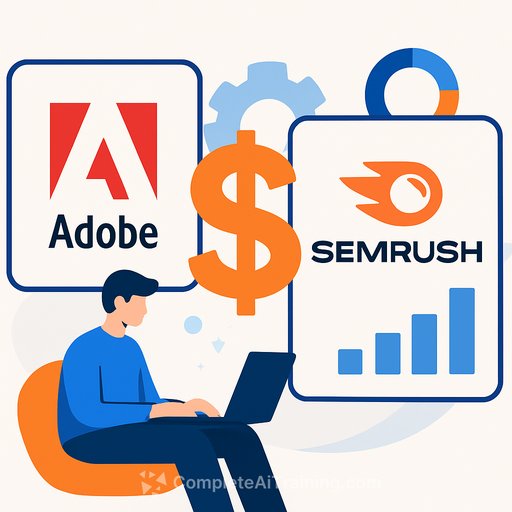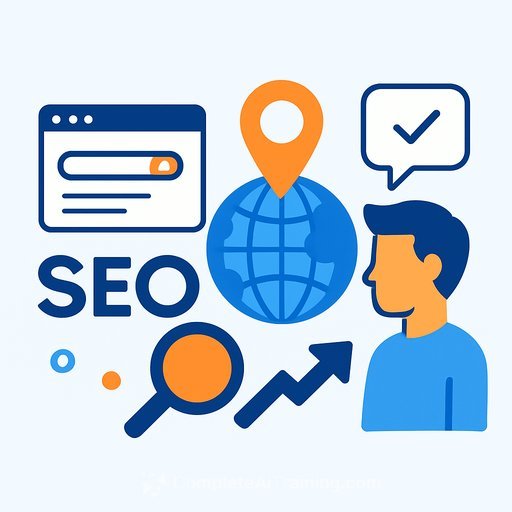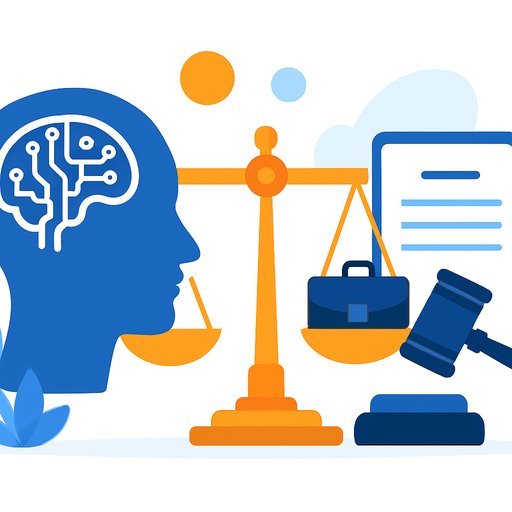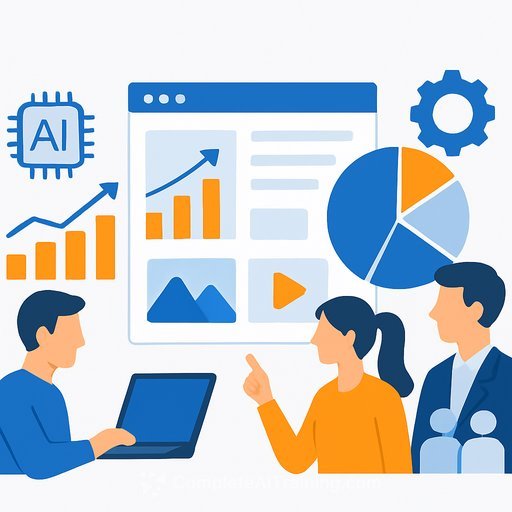Adobe to acquire Semrush for $1.9B: what marketers should do now
Adobe has agreed to buy Semrush for $1.9 billion in cash, valuing the SEO and AI marketing platform at $12 per share. It's Adobe's first major move since its failed 2022 attempt to purchase Figma for $20 billion. The deal has board approval on both sides and is expected to close in the first half of 2026, pending regulatory and shareholder approvals.
Adobe is currently valued at over $135 billion, and leadership maintains the company is still undervalued. CEO Shantanu Narayen has argued that markets are fixated on AI infrastructure and chips, while the software layer that actually drives outcomes is being overlooked.
The deal at a glance
- Price: $1.9B, all cash; $12 per share
- Timeline: Expected to close H1 2026 (subject to approvals)
- Strategic fit: Pair Semrush's SEO and AI-discovery data with Adobe Experience Cloud (AEM, Analytics, Brand Concierge)
- Advisors: Wachtell, Lipton, Rosen & Katz (Adobe); Centerview Partners (Semrush); Davis Polk & Wardwell (Semrush legal)
Why this matters for marketers
Search isn't just Google anymore. Large language models are a new discovery surface. Adobe says the Semrush acquisition will help brands see how they show up in traditional search, owned channels, and LLMs-then act on it within the same stack.
Anil Chakravarthy, President of Adobe Digital Experience, put it plainly: "Brand visibility is being reshaped by generative AI, and brands that don't embrace this new opportunity risk losing relevance and revenue." He also framed this move as "natural growth" to meet a clear customer need: appearing in AI answers and agents like ChatGPT.
Semrush brings momentum. Enterprise ARR grew 33% YoY last quarter. Its AI search products and AI Toolkit added nearly $10 million in ARR this year, more than doubling from Q2 to Q3. On the behavior side, Adobe Analytics reports traffic from generative AI sources to U.S. retail sites surged 1,200% YoY in October.
How Adobe might integrate Semrush
- Planning to publishing: Use Semrush's keyword/LLM-query intel to inform content in Adobe Experience Manager, then measure impact in Adobe Analytics.
- Brand governance: Pair Semrush visibility data with Adobe Brand Concierge to keep brand assets and claims consistent across search results, owned channels, and AI answers.
- New channel: Treat Generative Engine Optimization (GEO) as a distinct channel alongside SEO-optimize for prompts, entities, citations, and source credibility.
What to do now (practical steps)
- Audit AI visibility: Ask LLMs common category and brand questions. Capture which brands, pages, and sources they cite. Track monthly.
- Entity-first optimization: Strengthen brand and product entities (clear About pages, org schema, product schema, consistent NAP, authoritative profiles).
- Source credibility: Earn citations from trusted publications and documentation pages. LLMs favor well-structured, verifiable sources.
- Content structure: Publish concise Q&A pages, comparisons, how-tos, and specs with schema. Make answers scannable and reference-worthy.
- Measure the new traffic: Segment "AI referrals" where possible (browser referrers, shared links, app-specific patterns). Use Adobe Analytics or your CDP to tag and compare.
- Govern brand answers: Maintain a single source of truth for claims, pricing, and policies. Keep it crawlable and current.
- Experiment weekly: Test prompt formats, expert quotes, and data-backed visuals that increase citation likelihood in AI answers.
KPI shifts to watch
- Share of AI answers: Percentage of LLM answers that cite your brand or content.
- Entity coverage: Number of brand/product entities with verified, consistent profiles.
- Citation quality: Volume of mentions from high-authority domains and docs.
- Assisted conversions: Sessions initiated from AI-referred clicks and their downstream revenue.
What Semrush + Adobe could unlock
- Unified view: A single line of sight across SERPs, owned media, and AI answer engines.
- Closed-loop activation: Turn insight into content updates, experiments, and governance-without switching tools.
- Faster iteration: Shorter cycles from "signal" to "shipped content" to "measured lift."
Bill Wagner, CEO of Semrush, says the combination gives marketers "more insights and capabilities to boost their discoverability across today's digital channels," with a focus on AI search behavior that's already shifting buyers' habits. For teams already on Adobe, this could compress the workflow from research to published content to measurable visibility.
Timeline and considerations
- The transaction is approved by both boards but still needs regulatory and shareholder approval.
- If it closes as planned in H1 2026, expect staged integrations and new GEO reporting inside Adobe's suite.
- Until then, start building your GEO muscle: entity hygiene, citation strategy, and AI-answer testing.
If you want structured training on AI-led SEO, GEO, and prompt-driven content workflows, explore this practical path for marketers: AI Certification for Marketing Specialists.
Explore the platforms mentioned: Semrush and Adobe Experience Manager.
Your membership also unlocks:






